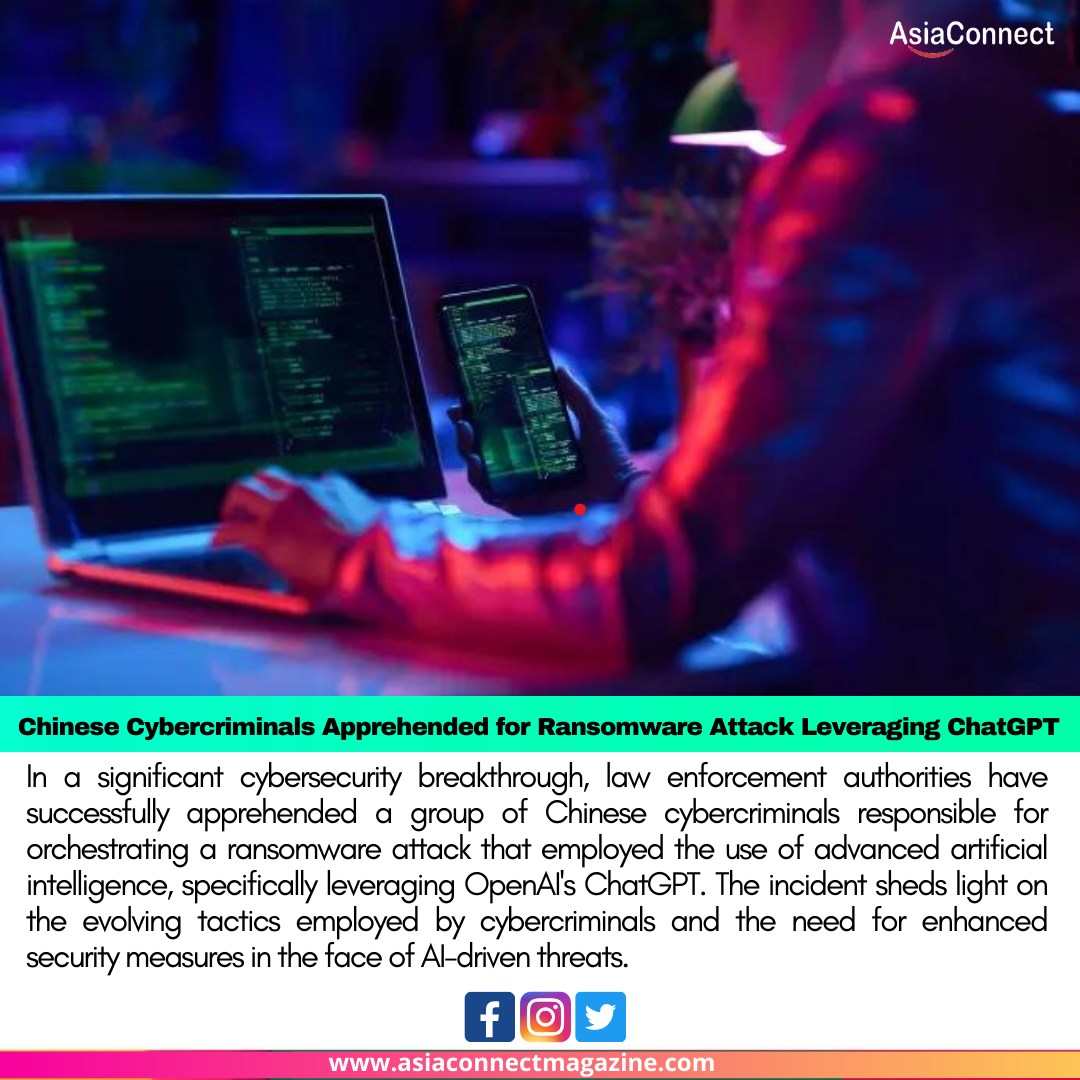In a significant cybersecurity breakthrough, law enforcement authorities have successfully apprehended a group of Chinese cybercriminals responsible for orchestrating a ransomware attack that employed the use of advanced artificial intelligence, specifically leveraging OpenAI’s ChatGPT. The incident sheds light on the evolving tactics employed by cybercriminals and the need for enhanced security measures in the face of AI-driven threats.
**1. The Unprecedented Ransomware Attack: The ransomware attack orchestrated by the Chinese cybercriminals was notable for its sophisticated use of artificial intelligence. The attackers utilized ChatGPT, a language model developed by OpenAI, to create convincing and personalized phishing messages aimed at tricking individuals into clicking on malicious links, ultimately leading to the deployment of ransomware on their systems.
**2. AI’s Role in Cybercrime: The involvement of AI in cybercrime represents a new frontier in the realm of malicious activities. In this case, the attackers leveraged ChatGPT to craft messages that closely mimicked human communication, making it challenging for individuals to discern the phishing attempts. This incident underscores the adaptability of cybercriminals in exploiting cutting-edge technologies for nefarious purposes.
**3. Law Enforcement Crackdown: Law enforcement agencies from multiple countries collaborated to trace and apprehend the cybercriminal group behind the ransomware attack. The successful crackdown highlights the importance of international cooperation in combating cyber threats that transcend geographical boundaries.
**4. OpenAI’s Response: In response to the incident, OpenAI issued a statement expressing concern over the misuse of its technology for malicious purposes. The organization reiterated its commitment to promoting the responsible and ethical use of AI, emphasizing the need for collective efforts from the tech community, governments, and users to address such challenges.
**5. Heightened Security Measures: The ransomware attack serves as a wake-up call for organizations and individuals to enhance their cybersecurity measures. The use of AI in crafting sophisticated phishing messages necessitates the adoption of advanced threat detection systems capable of identifying malicious activities that may not conform to traditional patterns.
**6. AI Ethics and Regulation: The incident also rekindles discussions around the ethical use of AI and the need for robust regulations to prevent its misuse. As AI technologies continue to advance, policymakers and technology developers must collaborate to establish guidelines and frameworks that discourage malicious applications and promote responsible AI practices.
**7. Educating Users: Cybersecurity education becomes paramount in the face of evolving threats. Users need to be aware of the tactics employed by cybercriminals and exercise caution while interacting with online content. Additionally, organizations should invest in user training programs to empower their employees to recognize and report potential security risks.
**8. Continuous Innovation in Cybersecurity: As cyber threats evolve, the cybersecurity landscape must keep pace with continuous innovation. The development of advanced threat detection tools, the integration of AI-driven security solutions, and proactive collaboration between the public and private sectors are essential components of a resilient cybersecurity framework.
In conclusion, the apprehension of Chinese cybercriminals utilizing ChatGPT for a ransomware attack underscores the pressing need for a multifaceted approach to cybersecurity. From international collaboration to the responsible use of AI, the incident serves as a catalyst for renewed efforts in fortifying digital defenses and staying one step ahead of cyber threats in an increasingly interconnected world.





